Module 5, 6 and 7 | Applied swine nutrition
WEDNESDAY 5, THURSDAY 6 AND FRIDAY 7 JUNE
Feedstuff composition, diet presentation, and dietary nutrient content greatly impact the performance of sows, piglets, and growing-finishing pigs. The effects can differ depending on the age and development of the pig, e.g. piglets are physiologically not capable of coping with feedstuffs in the same way as a sow does. To achieve optimal animal performance at the farm, it is of great importance to know the relations between nutrition, animal health and technical performance. Swine nutritionists need to combine the theoretical knowledge about the digestive physiology of swine and the biochemistry of feedstuffs to formulate diets. Therefore, the goal of nutrition is to provide essential nutrients to the animal for efficient (re)production, but also to assure animal welfare and health, and a low excretion of non-digested nutrients to the environment.
Learning objectives
- To obtain know-how to apply theoretical and practical nutritional knowledge to improve animal performance.
- To obtain know-how to meet the nutritional requirements of sows, piglets and growing-finishing pigs, as well as how to face a certain dilemma like efficiency and intestinal health or reproductive performance and longevity.
Applied swine nutrition contains 3 sub-modules:
- Module 5 Improve piglet vitality to improve sows lifetime performance
- Module 6 Gastrointestinal health, the key to an optimal performance
- Module 7 Optimal performance of growing-finishing pigs; focus on growth or FCR?
Remarks
- Please be aware that SFR recommendations will not be presented during the course.
- More experienced participants can also attend module 3 Nutrient Evaluation which will focus on energy, protein, fibre evaluation and Ca and P evaluation to improve nutrient utilisation and therefore feed efficiency.
MODULE 5: WEDNESDAY 5 JUNE
IMPROVE PIGLET VITALITY TO IMPROVE SOWS LIFETIME PERFORMANCE
Welcome and introduction
The problem
Sows have changed dramatically over the past ten to fifteen years. Selection based on litter size results in higher milk production and therefore higher nutrient requirements. At the same time, sows have fewer body reserves due to the selection for lean meat percentage (in the finishing pigs). Therefore, the formulation of diets for highly productive sows deserves extra attention to improve piglet vitality.
A good start is half the work!
During the rearing phase, several factors are important for a breeding gilt to develop into a highly productive sow. Due to genetic improvement, the growth rate of breeding gilts can be similar to growing-finishing pigs. A high growth rate can be beneficial for reproductive performance but negatively affect leg conformation and therefore longevity of the sow. How to find a balance between growth rate and longevity?
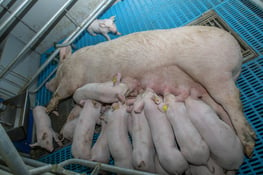
Improving piglet performance and vitality begins pre-farrowing
The significant increase in litter size in the last years has resulted in lower average piglet birth weights and decreased uniformity within the litter. Consequently, piglet viability decreased, resulting in decreased piglet growth and increased mortality, especially during the first days after farrowing. What nutritional strategies can help the sow to improve litter uniformity and piglet’s birth weight?
Nutritional opportunity to support the farrowing process and colostrum intake
A good colostrum intake is crucial for the survival and growth of the piglets. The colostrum intake depends on many factors, like litter size, birth weight, piglet vitality, and duration of the farrowing process, but also colostrum quantity and quality. During this presentation, nutritional strategies to promote the farrowing process and therefore increase the colostrum intake of the piglets will be discussed.
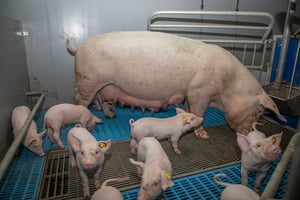
How to increase nutrient intake during lactation to optimise sows performance?
During lactation, the focus should be on maximizing milk production to promote litter growth, but at the same time on reducing weight loss of the sow. A high body weight loss during lactation negatively affects the performance of the sow in the next cycle and also impairs the longevity of the sow. During this presentation, the nutrient requirement and nutritional strategies will be discussed to support the performance of the sows.
How to deal with a suboptimal environmental temperature?
Genetic selection for animals with a high metabolic rate in combination with rising global temperatures at an unprecedented rate and an increasing frequency of heatwaves worldwide makes the discussion on reducing heat stress in swine more important than it ever was. Different management strategies can be used to reduce heat stress, though this presentation will focus on nutritional strategies to prevent heat stress and limit the negative effects.
Feed formulation
Different diet compositions will be used to illustrate how a nutritionist can formulate a specific diet suitable for a given situation. The focus will lie on optimising diets for gestating and lactating sows in different situations to, directly and indirectly, promote pre-weaning litter growth.
Meet the trainers

Xandra Benthem de Grave

Anouschka Middelkoop

Marco de Mik
MODULE 6: THURSDAY 6 JUNE
GASTROINTESTINAL HEALTH, THE KEY TO AN OPTIMAL PERFORMANCE
The problem
Supporting pig(let)s gut health seems to be more relevant than ever due to 1) the increasing pressure to decrease the use of veterinary antimicrobials, Copper and Zinc and; 2) the continuous increase in the number of piglets born/ litter and its consequences for piglets vitality. Furthermore, gastrointestinal problems rank amongst the highest causes of morbidity, mortality, and antimicrobial use.
The suckling period as a window of opportunity
During this presentation, it will be discussed how to utilise the pre-weaning period as a window of opportunity to prepare the piglet for weaning. Several functional ingredients and oral supplements, supplemental milk, and creep feed will be discussed that can be used to modulate piglet gut health. In addition, it will also be discussed why the success of providing creep feed is (amongst others) also dependent on the similarity with the post-weaning diet.
How to modulate stomach functioning and digesta kinetics
To keep piglets healthy, it is important to establish a good gastric barrier and function. Several nutritional strategies to modulate stomach functioning and digesta kinetics will be discussed during this presentation. These will include the nutritional factors that can help newly weaned piglets to acidify the stomach digesta and which physiochemical characteristics of the feedstuff and diet can modulate the stomach retention time and digesta kinetics.
Protein, fibre and fat in relation to gastrointestinal health
Pigs undergo major physiological changes from weaning onwards, requiring a structured nutritional approach over time. During this presentation, it will be discussed how the main nutrients (protein, fibre and fat) can support GIT health in piglets.
Vitamins in piglet diets in relation to reduced levels of copper and zinc
Vitamin deficiency is generally not a problem in modern intensive pig production. However, the modern pig is often exposed to challenges that lead to a disrupted redox balance and uncontrolled inflammation. In weaned piglets, the reductions in Cu and Zn will lead to more challenging conditions compromising their (intestinal) health. During this presentation, the vitamin requirements in piglet diets will be discussed.
Summary and case study
Feed formulation
Different diet compositions will be used to illustrate how a nutritionist can formulate a specific diet suitable for a given situation. The focus will lie on optimising diets that will benefit intestinal health in weaned piglets to promote performance.
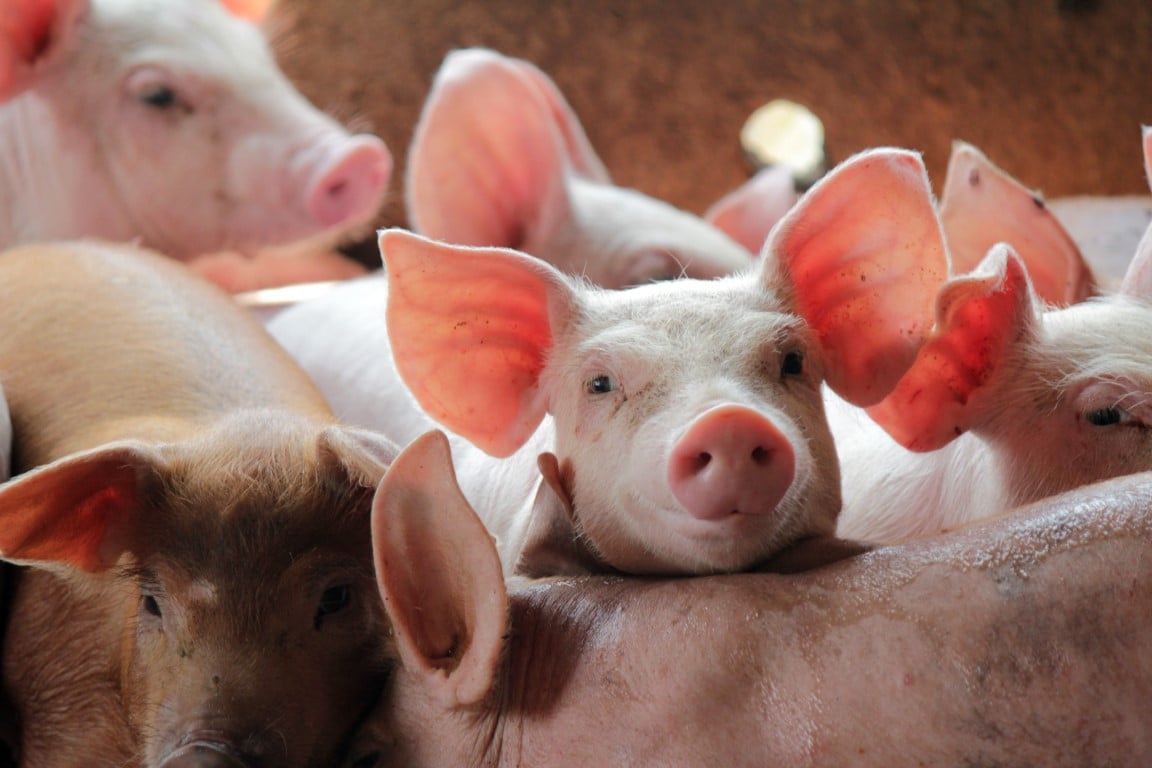
Meet the trainers

Anne Huting

Anouschka Middelkoop

Jan Fledderus
MODULE 7: FRIDAY 7 JUNE
OPTIMAL PERFORMANCE OF GROWING-FINISHING PIGS; FOCUS ON GROWTH OR FCR?
The problem
Modern genetics have the potential to grow well over a kilo per day with very sharp feed conversion. However, this high growth does put more pressure on intestinal health and increases locomotion problems, resulting in increased mortality. Furthermore, there are increasing demands on pig welfare, high-quality products, low antimicrobial use and environmentally sustainable systems. All these factors together will determine the optimal feeding strategy.
Optimal performance GF pigs; focus on growth or FCR?
The main goal of the swine industry is to achieve efficient pig production and maximize the economic return, reaching high-quality pig products without compromising animal welfare or environmental issues. Since feed is the largest production cost in commercial pig production (around 60% of all costs), the feeding strategy is key to success. There are multiple approaches a swine nutritionist can take in diet formulation: maximize performance, minimize cost, or maximize profit. In addition, environmental factors need to be considered as well. How to optimize the feeding strategy?
How can nutritional strategies affect carcass quality?
Due to consumer demand, pigs have become increasingly lean during past years. Currently, about 20% of pigs, mainly boars, have a backfat thickness of less than 11 mm, which impairs the carcass quality. Lean caresses show a higher amount of unsaturated fatty acids, which leads to softer fat. This negatively affects meat processing and, since fat is a flavour carrier, negatively affects palatability. As a consequence, consumer demands have changed again to preferring meat with a higher intramuscular fat content. How can nutritional strategies affect carcass quality and therefore the value of a carcass?
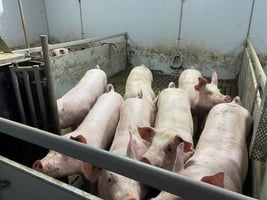
Leg weakness, a problem in modern genetics
Leg weakness is a broad term used to describe lameness of pigs caused by cartilage or skeletal abnormalities or claw lesions. Leg weakness is a problem resulting in economic loss. Though leg problems can be found commonly in pigs associated with multifactorial factors such as management and infectious diseases, high growth rate and sharp feed conversion play a big role in the occurrence of leg problems. During this presentation, the nutritional aspect of preventing leg problems will be discussed.
Gastro-intestinal health in GF pigs
In growing and finishing pigs, disorders occur in the health of the stomach and of the intestine. Stomach ulcers are a worldwide problem in pig production, however, their consequences on animal welfare and performance may still be underestimated. Diet can play an important role in the prevention of stomach ulcers. The effect of feed composition and particle size will be discussed in this presentation. Furthermore, intestinal disorders, like PIA and Swine Dysentery, impair animal performance and increase the use of antibiotics. Nutritional measures that can help in the prevention of these intestinal disorders will be discussed.
Alternative protein sources for pigs
Nitrogen excretion and the (European) dependence on soy imports are two factors that have received a lot of attention in livestock farming recently. The choice of a specific raw material in animal feed depends on the ratio between the feed value and the price. The raw materials that provide the most nutritional value for the lowest cost price are included. Which protein sources are potential soybean meal substitutes?
Feed Formulation
Different diet compositions will be used to illustrate how a nutritionist can formulate a specific diet suitable for a given situation. The focus will lie on optimising diets that will positively affect performance and carcass quality.
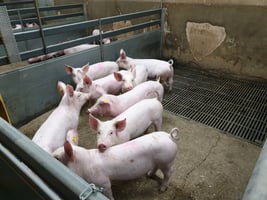
Meet the trainers

Jan Fledderus

Marco de Mik
